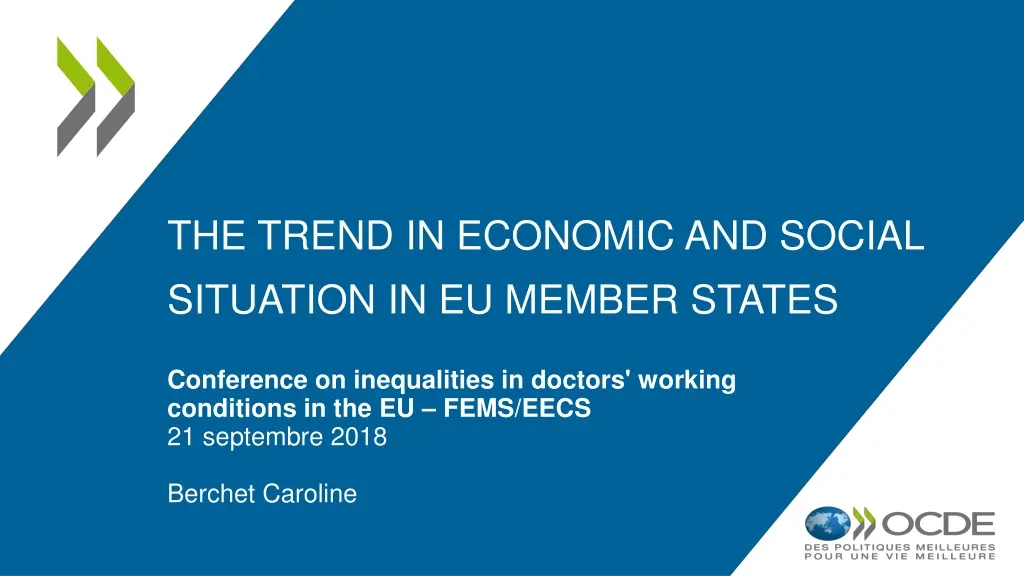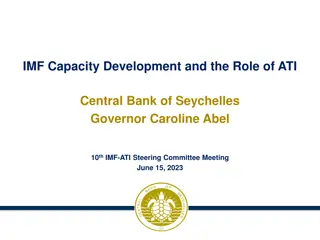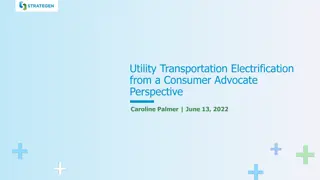
Positive Trends in Economic and Social Situation Across EU Member States
"Explore the latest developments in the economic and social landscape of EU countries: improving economy, rising labor force participation rates, reduced unemployment, but persistent income inequality. Despite challenges, there are positive changes enhancing quality of life, including noteworthy advancements in health and healthcare quality."
Download Presentation

Please find below an Image/Link to download the presentation.
The content on the website is provided AS IS for your information and personal use only. It may not be sold, licensed, or shared on other websites without obtaining consent from the author. If you encounter any issues during the download, it is possible that the publisher has removed the file from their server.
You are allowed to download the files provided on this website for personal or commercial use, subject to the condition that they are used lawfully. All files are the property of their respective owners.
The content on the website is provided AS IS for your information and personal use only. It may not be sold, licensed, or shared on other websites without obtaining consent from the author.
E N D
Presentation Transcript
THE TREND IN ECONOMIC AND SOCIAL SITUATION IN EU MEMBER STATES Conference on inequalities in doctors' working conditions in the EU FEMS/EECS 21 septembre 2018 Berchet Caroline
THE ECONOMY IS RECOVERING 2
The economy is expanding Source: OECD economic outlook n 101, 2017/1 3
The labour force participation rates are increasing 4 Source: OECD economic outlook n 101, 2017/1
The unemployment rate has been reduced in many EU countries 5 Source: OECD economic outlook n 101, 2017/1
But income inequality remains at historical highs Inequality of annual incomes, GINI Coefficient, OECD countries Gini coefficient 0.50 0.45 0.40 0.35 0.30 0.25 0.20 0.15 0.10 0.05 0.00 6
DESPITE INCOME INEQUALITY, THERE ARE POSITIVE CHANGES IN QUALITY OF LIFE 7
Significant improvement in quality of life are reported in 11 countries.. Changes relative to 2005, Share of indicators, 11 indicators used, Life expectancy Educational attainment Feeling safe Homicides Air quality Working hours Water quality Voter turnout Perceived health Life satisfaction Social support 8
while 6 countries reported very few improvement Changes relative to 2005 Share of indicators 11 indicators used Life expectancy Educational attainment Feeling safe Homicides Air quality Working hours Water quality Voter turnout Perceived health Life satisfaction Social support 9
LARGE IMPROVEMENT IN HEALTH AND HEALTH CARE QUALITY 10
Quality of health care is improving Thirty-day mortality after admission to hospital for AMI based on unlinked data, 2005 and 2015 (or nearest years) 11 Source: OECD Health Statistics 2018.
There have been substantial gains in life expectancy over time Life expectancy at birth, by gender, 2016 12 Source: OECD Health Statistics 2017, Eurostat Database.
Health spending account for 9.6% of GDP, largely unchanged in recent years 13 Source: OECD Health Statistics 2017, Eurostat Database.
Higher national income and health spending is associated with higher life expectancy at birth Life expectancy at birth and GDP per capita, 2015 (or nearest year) Life expectancy at birth and health spending per capita, 2015 (or nearest year) Life expectancy in years Life expectancy in years 85 85 JPN JPN FIN CAN ESP ESP FRA ISL ISR NOR ISL AUS CHE LUX ITA ITA SWE AUS SWE ISR CHE FRA NOR KOR KOR NLD LUX IRL NLD PRT IRL GRC NZL NZL GRC AUT AUT DNK DEU GBR 80 PRT SVN DNK GBR 80 CHL SVN USA DEU CRI FIN CRI CAN BEL CHL CZE BEL USA CZE TUR EST TUR POL POL SVK EST SVK CHN HUN MEX CHN 75 MEX HUN BRA 75 LTU BRA LVA COL COL LVA LTU RUS RUS 70 70 IDN IND IDN IND R = 0.54 R = 0.57 65 0 2000 4000 6000 8000 10000 65 0 20000 40000 60000 80000 100000 Health spending per capita (USD PPP) GDP per capita (USD PPP) 14 Source: OECD Health Statistics 2017.
There are other important factors contributing to longer life expectancies Education Lifestyle factors (obesity, alcohol consumption, smoking) Appropriate access to care 15 Source: James and Devaux, 2018.
Thanks for your attention! Find our publications online at www.oecd.org/els Caroline.berchet@oecd.org Follow us on Twitter @OECD_social 16 Email us Caroline.berchet@oecd.org






















